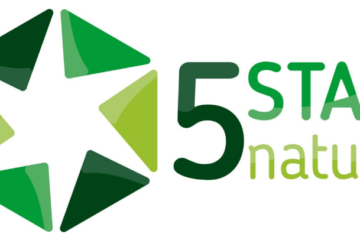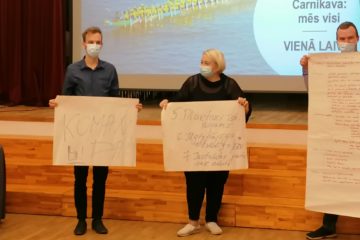Jury’s prize : 3rd place – Boergondische Buren
Project n°25
INTRODUCTION
“Boergondische Buren,” a transnational LEADER project, celebrates the shared Burgundian heritage, agricultural roots of cross-border farmers and local products. The initiative, driven by the request of farmers and local entrepreneurs, aimed to strengthen connections across the border, create new sales opportunities, and promote collaboration.
A key achievement was the creation of a comprehensive database of farm and regional products, providing a valuable resource for consumers and the hospitality industry to discover and source local goods. This has not only opened new sales markets but also revitalized the region’s agrarian culture by putting the spotlight on farm and regional products.
To support cross-border trade on local markets, a practical manual was developed, offering farmers clear guidance on sales beyond the border.
The project also established a strong entrepreneurial network, fostering knowledge exchange through workshops and gatherings. Engaging with agritourism, the project connected local producers with the hospitality sector, inspiring collaborative tourist packages. The project’s crowning achievement is the construction of the “Niemandsland” watchtower, designed through public participation, symbolizing the region’s shared history and culture. This unique structure on the border features sculptures and a QR-code linking visitors to local producers, creating a lasting legacy and beacon of tourism for the region.
PRESENTATION OF THE PROJECT
The “Boergondische Buren” project, named to reflect the shared Burgundian heritage and agricultural traditions, is a transnational LEADER initiative designed to strengthen cross-border cooperation between farmers, local producers, entrepreneurs, and communities in the border region between Belgium and the Netherlands. This ambitious project has successfully connected diverse actors through a series of strategic actions that fostered collaboration, supported local economies, and enhanced regional tourism. The project was established bottom-up, as it was on the demand of farmers and local producers that we set up the project’s plan.
Farm and Regional Products
A central achievement of the project was the creation of a comprehensive database of farm and regional products. This database serves as a crucial resource for consumers and the hospitality industry, facilitating access to locally produced goods. The mapping of barriers related to cross-border trade was a critical part of this effort, helping to identify and overcome obstacles that farmers face when trying to expand their markets across the border.
The project also established a strong network of (agro-)entrepreneurs in the border region, organizing events and workshops that provided opportunities for knowledge exchange and collaboration. These gatherings were vital in creating a sense of community and helped them cultivate the opportunities this border region has to offer. To further support the endeavour, a manual for cross-border sales at local markets was developed, offering practical guidance on how to start and address the difference in applicable rules. This resource has been instrumental in accessing new markets and increasing their sales, contributing to the overall economic vitality of the region.
Farm Tourism
Recognizing the potential of agritourism as a driver of economic growth, the project also focused on connecting local producers with the hospitality sector. Data was gathered to identify interested parties, and support was provided to entrepreneurs in setting up cross-border hospitality arrangements. This led to the creation of innovative partnerships between local B&Bs, farms, and other actors, enhancing the region’s tourism offerings.
Watchtower Niemandsland
The project’s crowning achievement is the construction of the “Niemandsland” watchtower, a symbolic structure that straddles the border between Stekene (Belgium) and Hulst (Netherlands). This watchtower is a powerful reminder of the region’s shared history, referencing the States-Spanish lines and the stories of smugglers who once traversed these lands. The watchtower’s design was the result of a unique cross-border collaboration, with young architects from the region being selected and the final design chosen by public vote.
This landmark has become an anchor for tourism in the border region, drawing visitors and boosting local businesses. It symbolizes the togetherness and cooperation that has been at the heart of the “Boergondische Buren” project.
PRINCIPAL OBJECTIVES
– Making connections across the border region by emphasising the shared Burgundian mentality and (cultural) heritage
– Creating an overview of the supply of farm and regional products in the border region
– Mapping bottlenecks for trading across the border and providing a solution, which was done via a comprehensive manual
– Helping local farmers promote goods produced in the border region
– Exchange of knowledge between suppliers of farm and local products
– Setting up cross-border arrangements for tourism
– Establishing a landmark for tourism reflecting our shared history in the border region
– Introducing the agricultural goods the region has to offer to the wider public
ADDED VALUE OF THE PROJECT
“Boergondische Buren” exemplifies the essence of cross-border cooperation, closely aligning with LEADER principles and showcasing significant added value through its diverse partnership and impactful outcomes. The project successfully brought together a highly diversified and complementary group of partners, each contributing their expertise and resources. This consortium included governmental bodies, cultural and environmental organizations, tourism agencies, and agricultural associations. This mix ensured a holistic approach, addressing the needs of agriculture, tourism, heritage, and the environment in a coordinated manner. The involvement of local and regional stakeholders facilitated strong local engagement and ownership, which was critical to the project’s success.
LEADER provided a framework that fostered better governance and social capital, outcomes that would have been challenging to achieve in a conventional project. By leveraging a bottom-up approach, the project enabled direct involvement of local communities and stakeholders. This not only enhanced the relevance and effectiveness of the initiatives but also ensured that solutions were tailored to the specific needs of the region. The focus on (cross-border) collaboration was key to overcoming logistical barriers, leading to better results and fostering a sense of regional unity.
The “Boergondische Buren” project had a substantial impact on the region, benefiting a wide range of stakeholders, including farmers, local businesses, tourists, and residents. The creation of a farm and regional products database directly benefited local producers by opening new markets and enhancing their visibility, which was strengthened even more by the creation of the manual. The project’s reach extended across the Belgian and Dutch border, significantly contributing to regional economic development. The “Niemandsland” watchtower, a symbol of shared cultural heritage, has become a landmark attraction, boosting tourism and creating opportunities for local businesses. Additionally, the network of events and workshops fostered a strong agricultural community, empowering farmers with new knowledge and connections that continue to benefit the region.
Fully aligned with LEADER principles, the project focused on community-led local development, innovation, and cooperation. The cross-border nature of “Boergondische Buren” embodied the philosophy of building bridges across communities and fostering sustainable rural development. By enhancing the marketability of local products and creating new opportunities, the project contributed to the economic diversification and resilience of the region.
The sustainability of the “Boergondische Buren” project is well-established. The systems and networks created, such as the product database, cross-border partnerships, and the cross-border trade manual, are designed for long-term use and adaptability. The success of this project has already sparked interest in new initiatives, serving as an incubator for further cross-border collaborations. The watchtower, as a physical legacy, continues to draw visitors, ensuring ongoing benefits for the local economy.
The project’s transnational impact is notable, fostering mutual learning and skills transfer between Belgian and Dutch partners. The cooperation between diverse actors has created a model for cross-border collaboration that can be replicated in other regions. The project facilitated direct exchange, contributing to stronger European cohesion and rural development.
“Boergondische Buren” stands as a beacon of successful cross-border cooperation, driven by LEADER’s principles and demonstrating a lasting impact on regional development.


